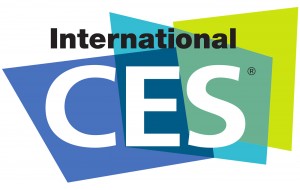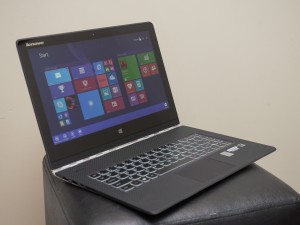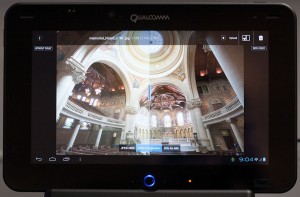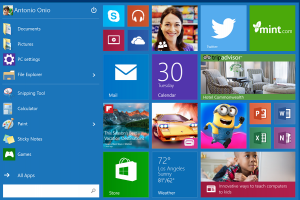CES 2015 Preview: New Tech for the New Year
Dec 30, 2014
 The International Consumer Electronics Show, is only a week away, with every major electronics manufacturer from AMD to Vizio ready to showcase their latest technology. Our lips must remain sealed about a few surprises that are in store, but we can round-up the best of the rumors and reveal some of the new technology and trends we expect to see.
The International Consumer Electronics Show, is only a week away, with every major electronics manufacturer from AMD to Vizio ready to showcase their latest technology. Our lips must remain sealed about a few surprises that are in store, but we can round-up the best of the rumors and reveal some of the new technology and trends we expect to see.
CES 2015 officially runs from January 6th to the 9th, and the trade show has evolved over the years from being a convention almost exclusively for exhibitors to preview products to retail buyers. While CES includes press events where companies unveil new products to the public, the key purpose is to convince retailers to buy the latest tech products for resale to their customers.
“The Big Show,” as Vegas locals often call it, will see consumer electronics and accessory manufacturers of every size launch hundreds (if not thousands) of new products for the year ahead. Here are a few of the highlights that we can talk about:
 Connected Home: Powered by Apple
Connected Home: Powered by Apple
Various manufacturers have been pushing for the “smart home” at CES for several years, but this is the year we may finally see some serious traction in the smart home space thanks to Apple’s HomeKit framework. Thanks to HomeKit, developers and manufacturers finally have a single control interface to work with … imagine controlling your thermostat, door locks, lights, and a wide range of home appliances just by holding up your iPhone and talking to Siri.
 More (or Less) of the Same: Thinner and Lighter Tablets and 2-in-1s
More (or Less) of the Same: Thinner and Lighter Tablets and 2-in-1s
The PC and tablet industry released some impressively thin mobile devices in 2014 thanks in no small part to the latest system-on-a-chip (SoC) processor technologies with lower thermals and lower power consumption. That being said, many people still believe large tablets and 2-in-1 convertible laptops are too heavy (even devices like the Microsoft Surface Pro 3that tip the scales at a mere 1.75 lbs).
AMD will almost certainly showcase thinner and lighter devices running the company’s latest APU processors and you can expect to see a variety of tablets and 2-in-1s powered by the newest batch of Intel Atom processors. The new “target weight” for a tablet will be 1 pound while most 2-in-1 hybrids (the ones not running higher performance Core M processors and not designed for rugged environments) will aim to stay below 2 lbs.
Longer battery life and quicker charging
Battery technology has all but taken a quantum leap in 2014. Not only can phones like the Droid Turbo power up for 8 hours after just a 15-minute charge, but the phone can last 24-36 hours after a full charge. Expect to see this impressive battery tech scale up from smartphones to larger devices like tablets and 2-in-1 laptops for 2015. Mobile computing will all but demand quick charge capabilities combined with longer battery life via extreme power-saving modes.
The big trick here is maintaining the lifespan of the battery after frequent quick charges. Older battery technology allowed manufacturers to charge laptop batteries quite rapidly, but the tradeoff was that the lifespan of the battery was dramatically reduced. No one wants an ultrathin laptop or a tablet with an integrated battery that dies within two years, so expect to see claims of quick charge with lengthy battery life and lengthy lifespan in 2015.
 Displays with More Resolution, More Flex, and More Dynamic Range
Displays with More Resolution, More Flex, and More Dynamic Range
4K TVs and Ultra HD aren’t the only display tech to watch out for this year. Most industry experts have expected to see a major release of flexible screen technology (beyond curved TVs) at CES for the last several years. Thanks to the increased interest in wearable tech and advances in plastic OLED (POLED) technology we may actually see some major releases of devices with flexible (or even foldable) screen tech.
While we’re talking about new displays, another big push we expect to see in 2015 is a growing emphasis on high dynamic range (HDR). Brightness and contrast have always been key battlegrounds for display makers, but as resolution and screen brightness increase the human brain starts to pick up on the lack of subtle transitions between highlights, midtones, and shadows. The key difference between a real sunset and a sunset shown on a 4K display isn’t just the resolution … it’s the details in the transitions between the brightest and darkest areas of the image combined with how much detail you can still see in the highlights and the shadows.
The bottom line is that you can expect to see the AV industry as a whole emphasize the importance of high dynamic range with screens rated at 1000 nits brightness or more with the widest possible range of luminance levels in display panels for 2015.
Microsoft revealed plans for Windows 10 for enterprise clients back in September of 2014 with news that the new OS will improve productivity with Metro-style tiles in the Start menu accessible from the desktop and the ability to create multiple desktops for multiple users or multiple personal needs (like a home desktop and a work desktop).
Various Microsoft insiders have been circulating rumors for several weeks that consumers will get to see much more of Windows 10 in January of 2015. In all likelihood, we expect Microsoft to showcase Windows 10 inside closed-door meetings with the press and OEMs in order to build industry buzz and that Microsoft will unveil the consumer preview of Windows 10 in late January following CES.
A major part of the Windows 10 reveal will no doubt be the details of Microsoft’s plans for better interconnectivity and interoperability between Windows PCs, Windows tablets and phones, and the Xbox One console.
A consistent message in the Windows 10 rumor mill is that Microsoft will unite all your devices with one platform and one store. That sounds a lot like the scalable OS that Windows 8 was supposed to be. Let’s hope it works better for Windows 10 devices and that the developer community is on board.
Source: NotebookReview
